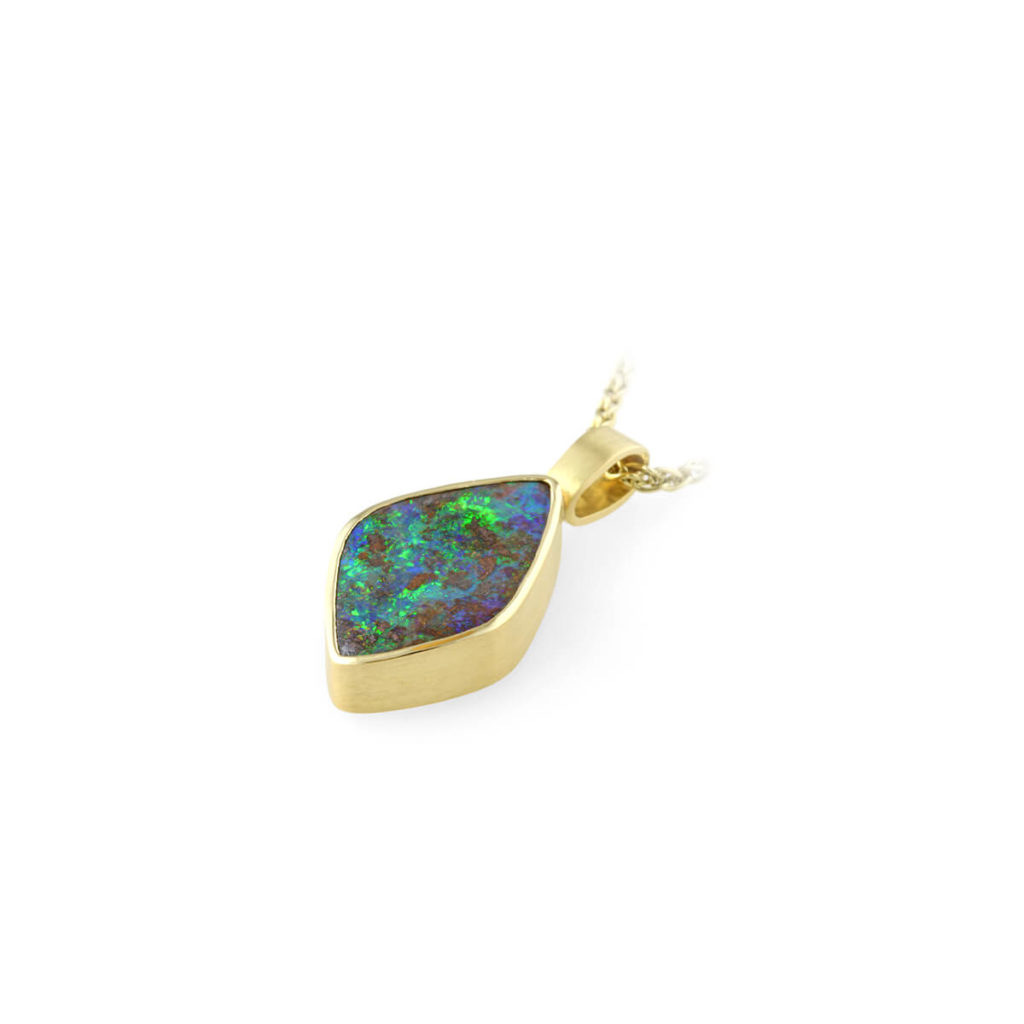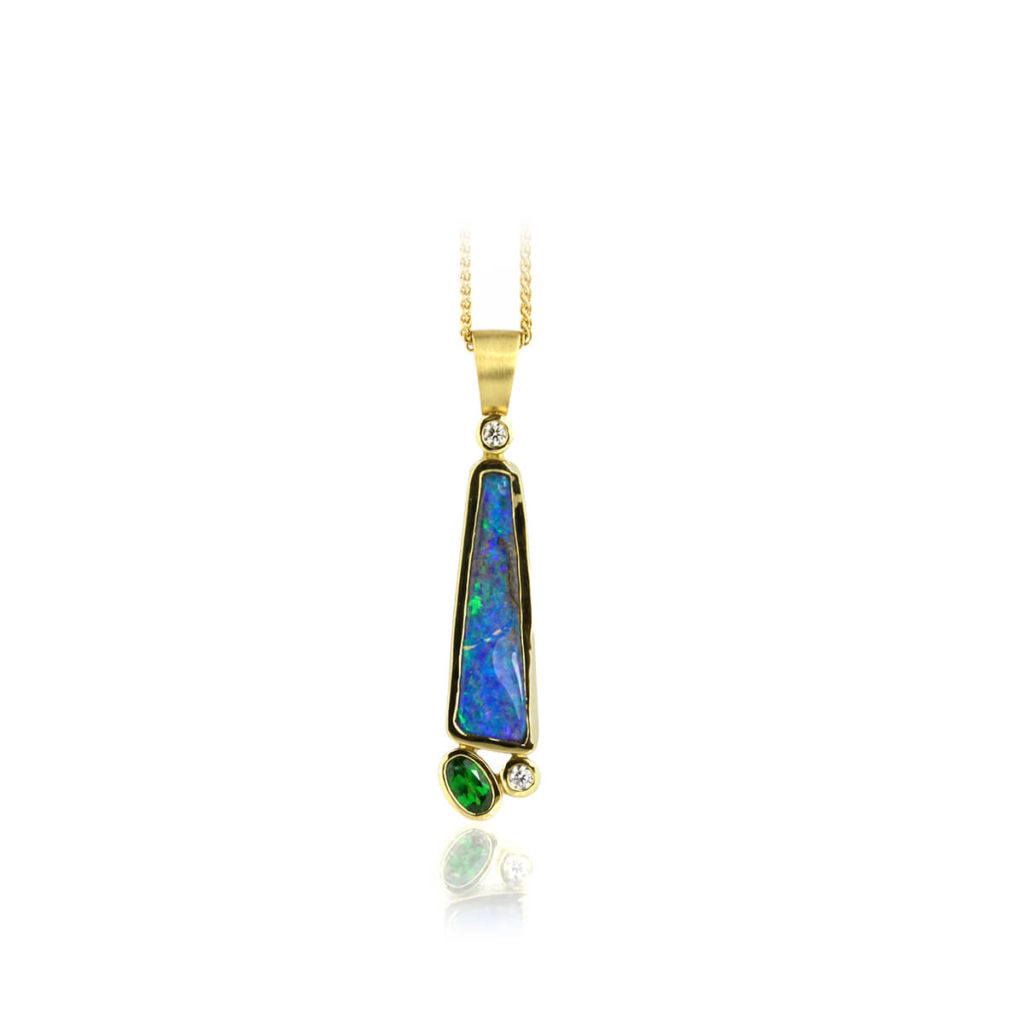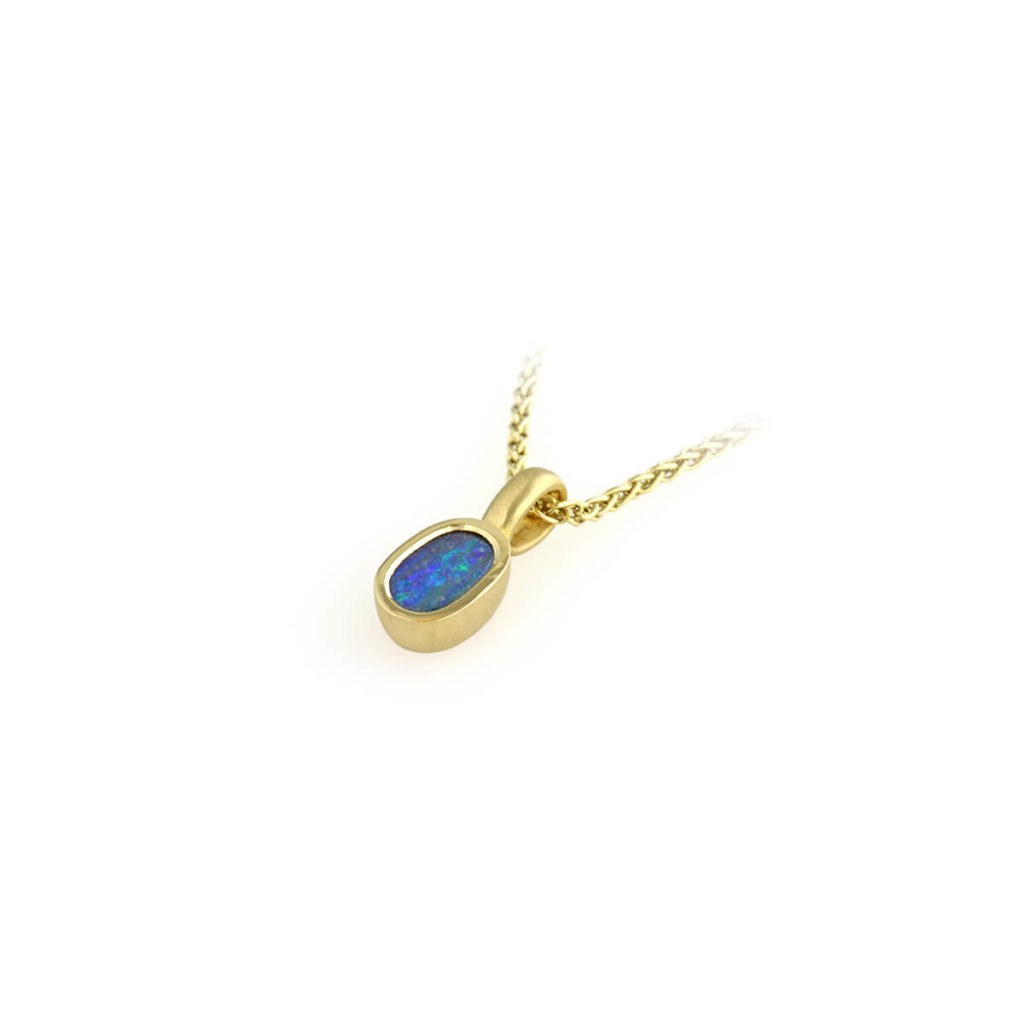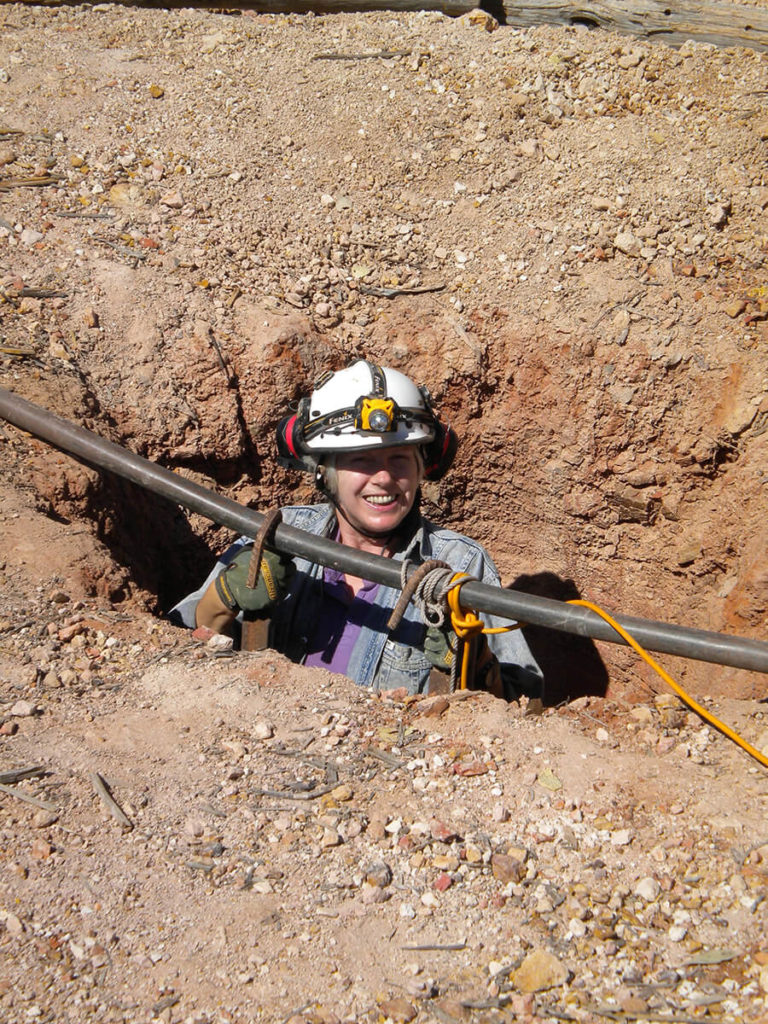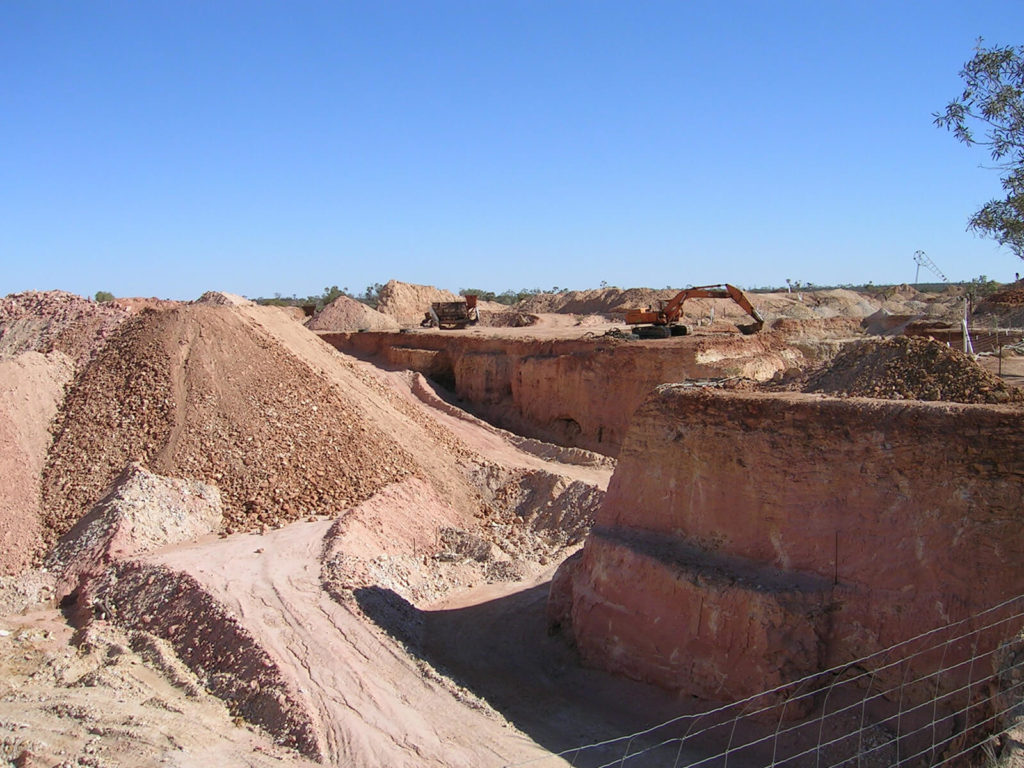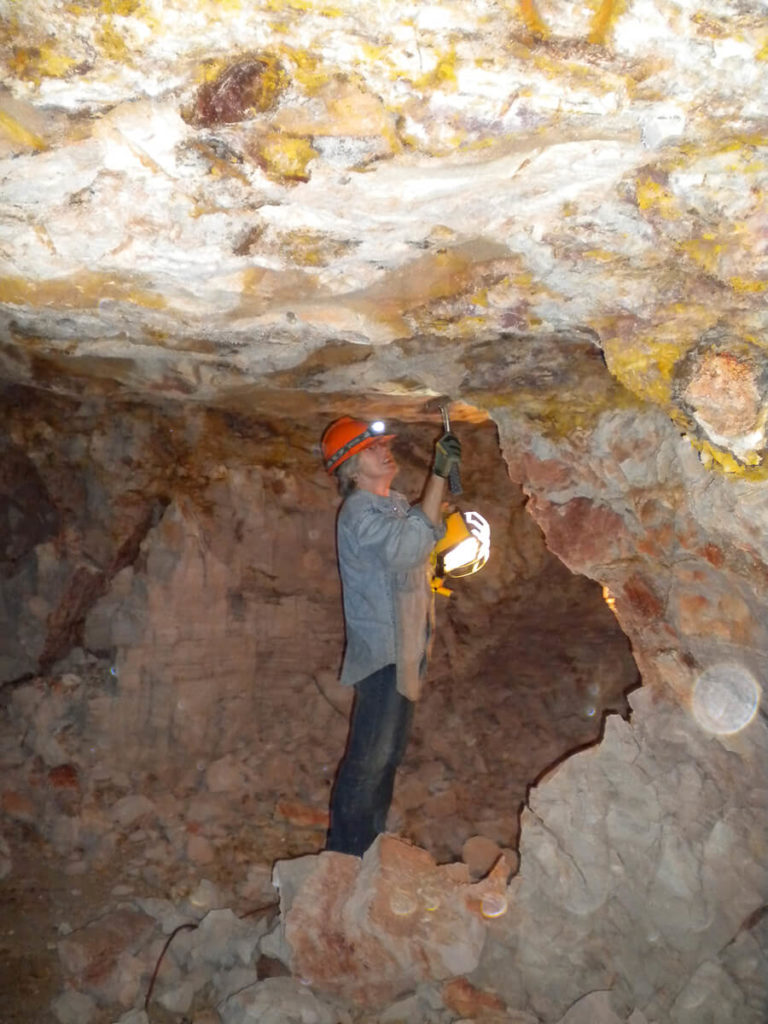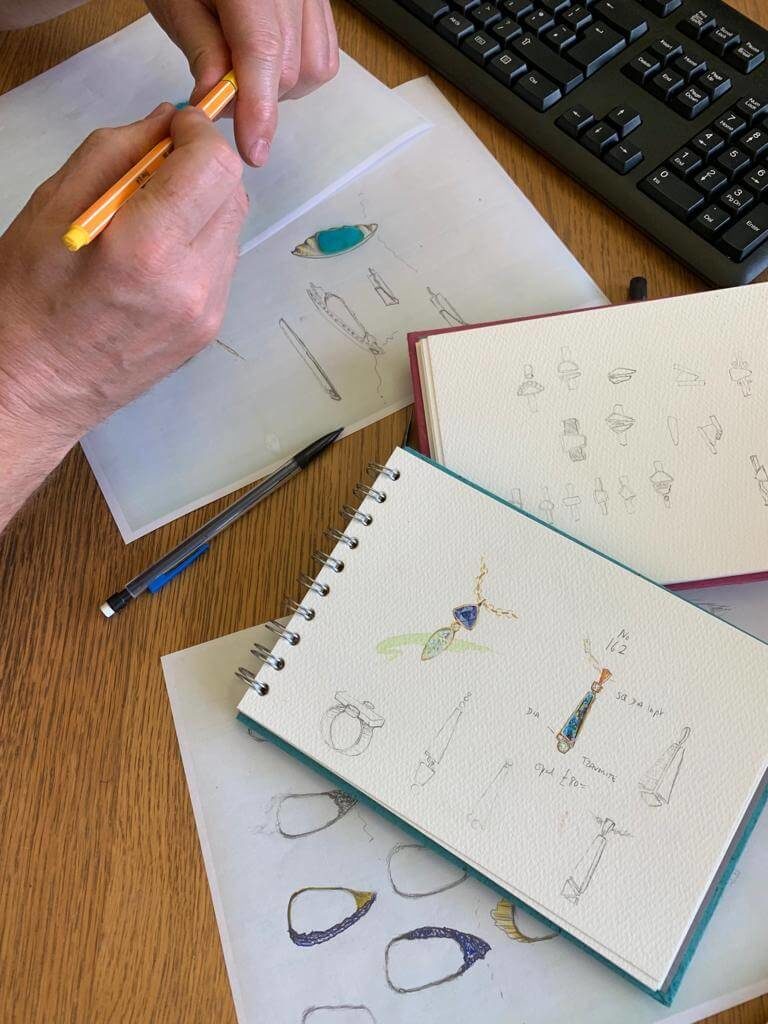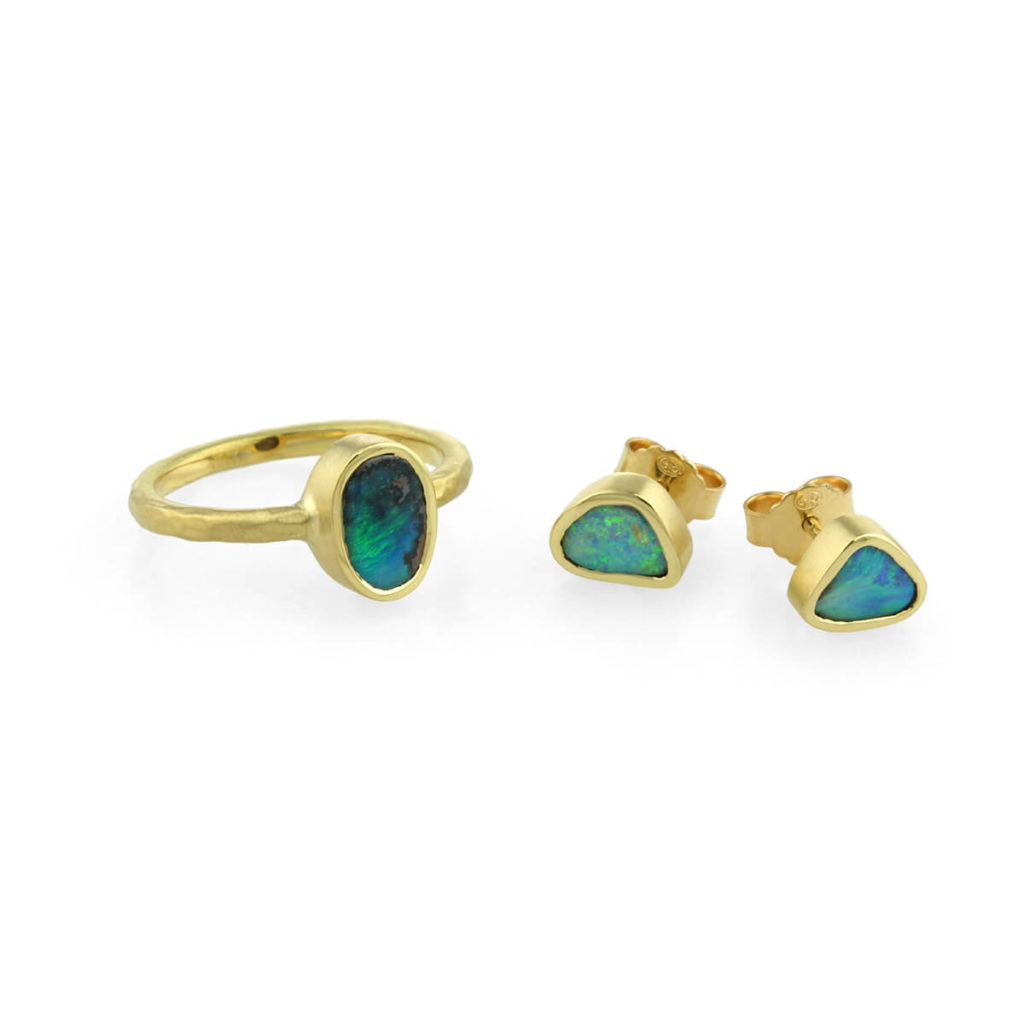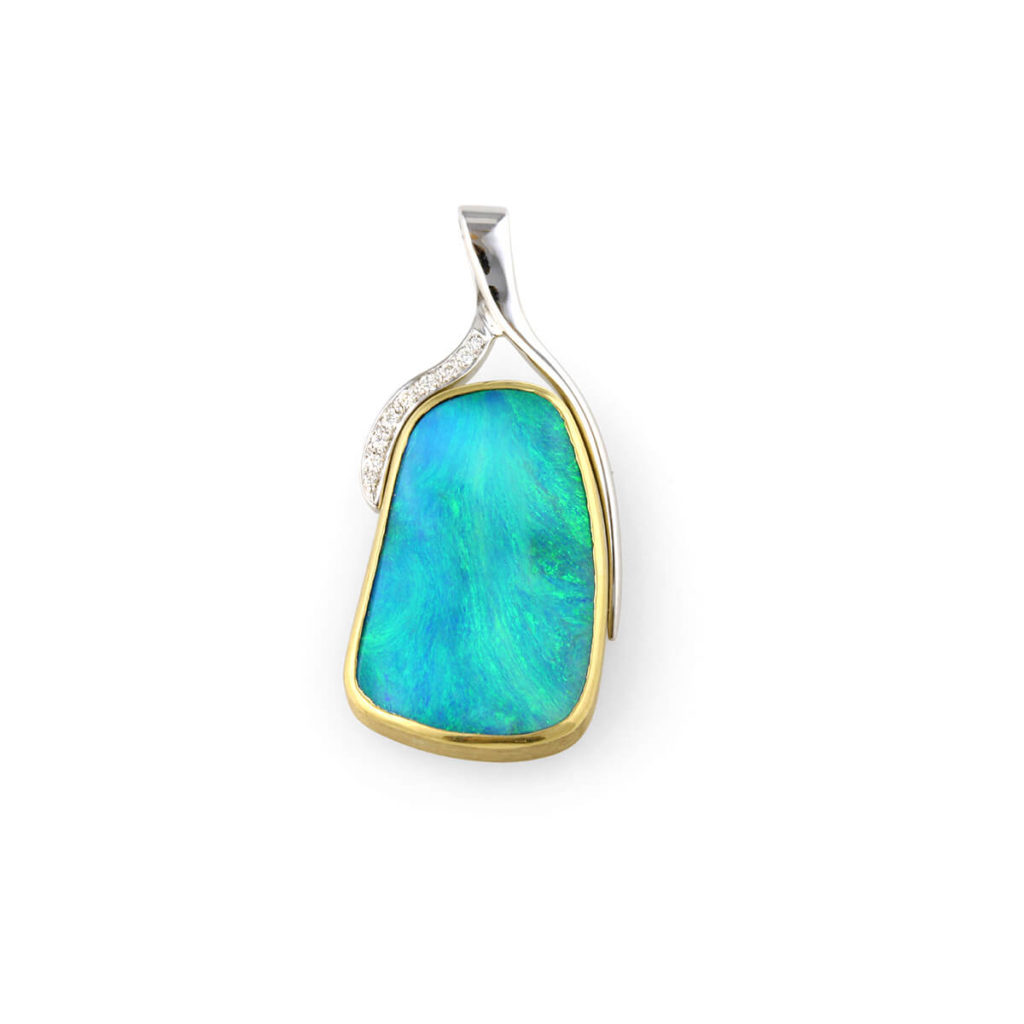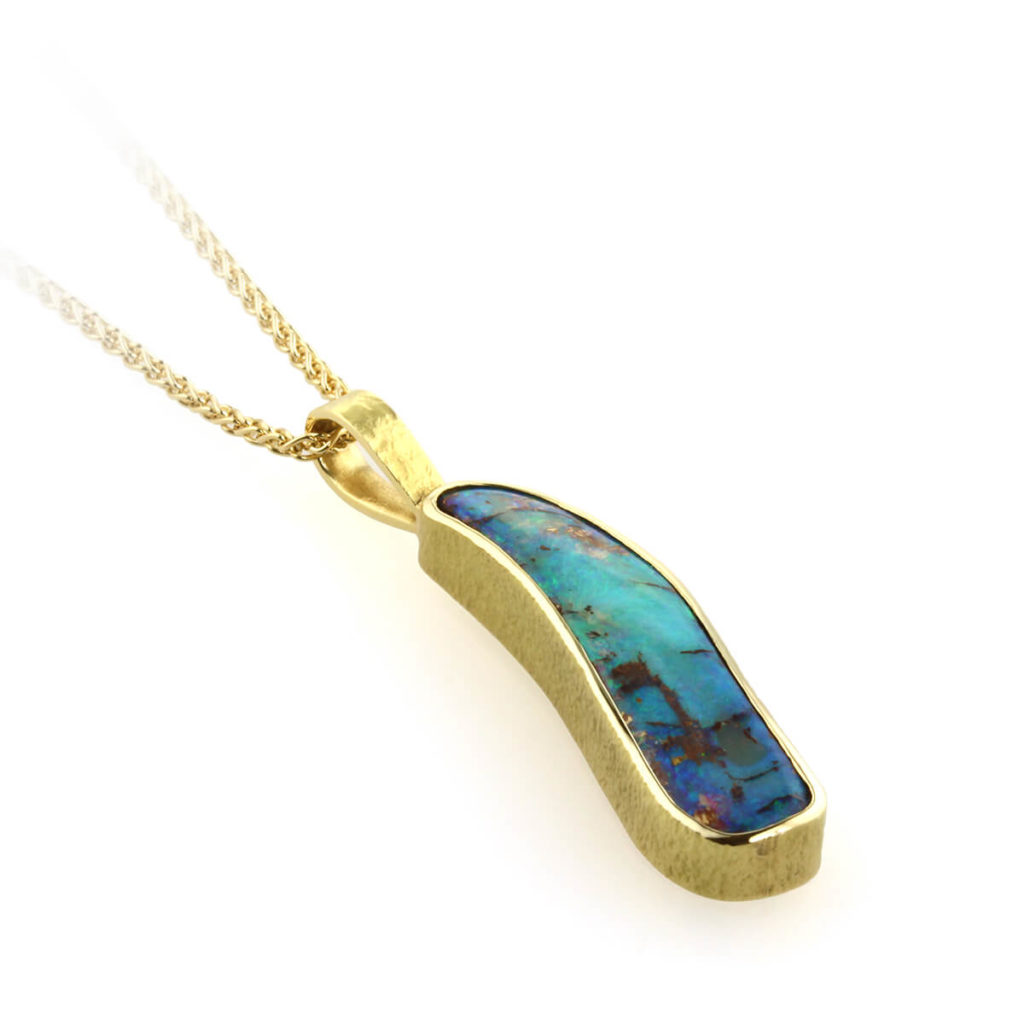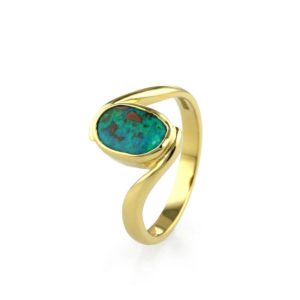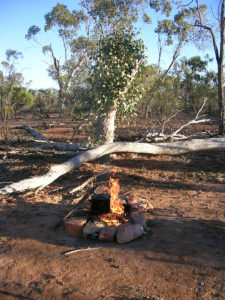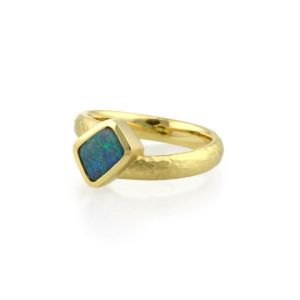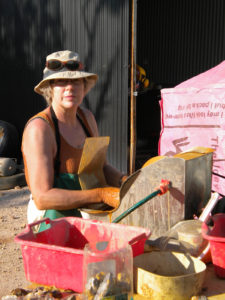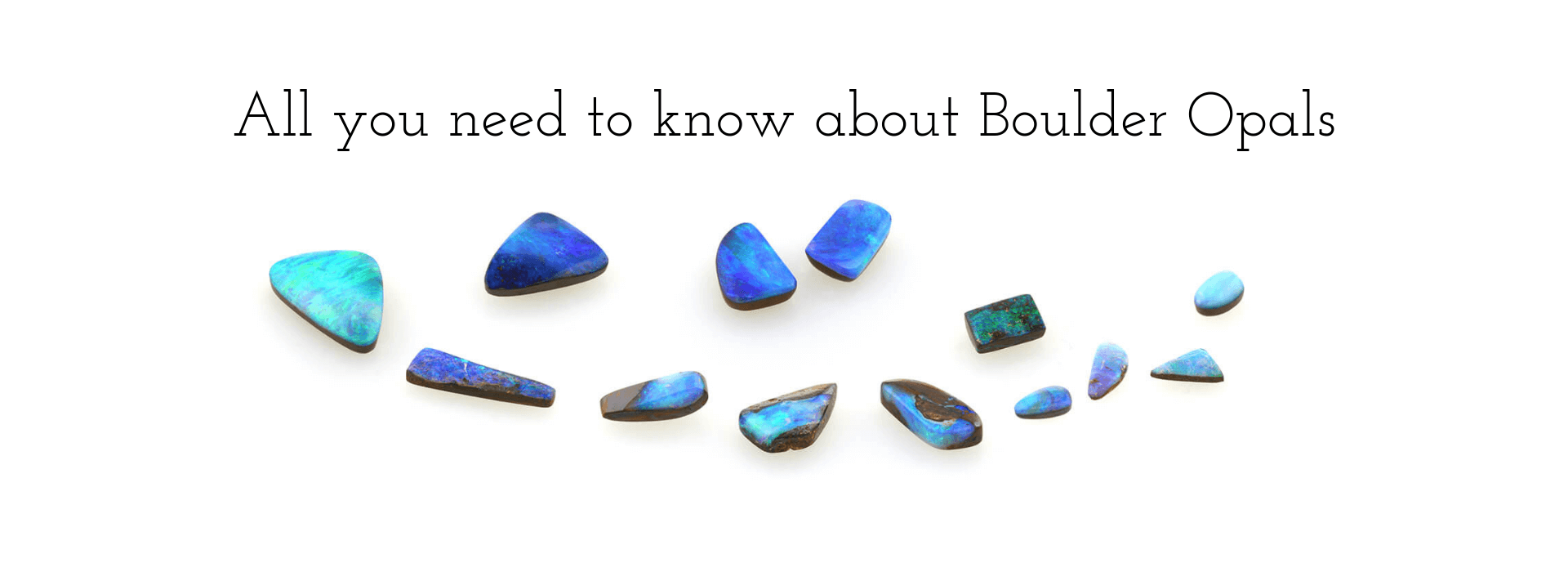
How we discovered our love for boulder opals.
Our boulder opals have been mined by our great friends Barbara Lamont and Edi Heide of The Opal Cutter, Barbara has been mining opal since 1982 in Edi joined her in 2008 when they began to mine their current Tongues of Fire Koroit mine in Queensland.
Our close friendship over many years means that we know exactly where our opals have been sourced and that they have been responsibly mined and cut. We are really excited to share our new collection of boulder opal jewellery, handmade in the UK. Here is all you need to know about boulder opals.
Where are boulder opals found?
Boulder opal is a unique opal found only in Queensland Australia.
What are boulder opals and how are they different from other opals?
Boulder opal was first discovered in Australia at Quilpie, Western Queensland in about 1870.
Good examples are among some of the most valuable forms of opal due to their rarity (accounting for only 2% of all Australia’s opal production) and lustrous range of colours.
Boulder opal occurs in narrow seams that are embedded between the predominant ironstone rock and it is generally cut with the ironstone backing intact. Boulder opal is very durable due to the ironstone backing that the opal forms upon and because the water content within the opal is very low it rarely cracks or crazes as it ages. The earth took roughly 5 million years to solidify just one centimetre of opal.
What gives boulder opal its colour?
Opal is comprised of minute spherical particles of silica. Light passes through these transparent spheres and is scattered. Diffraction splits the white light up into colours of the spectrum and throws it out at different angles. Larger spheres produce red light, smaller spheres produce green to violet. In good quality opal, the spheres are packed together in a remarkably regular pattern. This results in fiery flashes and bands of colour, seemingly floating in a three-dimensional void.
This kind of precious opal displays the same brilliance and play of colours as the much better known, black opals.
What are the most valuable boulder opals?
Boulder opal can exhibit a range of colours. Red has the highest value ranging through to orange, gold, green and blue. But of all the opals, boulder opal has the most individual characteristics.
How are boulder opals found and mined?
Most opal is found between 3 and 30 metres below the surface in “levels”. Miners will create shafts and descend into them to “read the ground”. Once they have decided there is possible opal to mine, the next stage is to start creating shallow levels which are mined by using bulldozers. Once they have reached deeper, tunnelling machines are used which are like small coal mining machines. There is lots of material which has to been extracted through pipes by powerful “blowers” and dumped on the surface. A noodling machine is then used to filter through the waste on the surface for any hidden gems. Nothing is overlooked. Despite the need for all this work, roughly 90 per cent of all opal found has little or no value and is named “potch” which is black, brown or colourless. Potential good quality material is retained and inspected with much greater care to establish the best possible use of the precious boulder opal inside.
Designing and making our boulder opal collection
This is the best part. By its very nature, boulder opal is cut to make the best use of the colours and shapes within each individual stone. This makes each piece unique and therefore when designing, we take time to examine the stone and seek inspiration as to how best to use it. Pendants and rings are the most straightforward forms of jewellery to design as each stone’s features shine out. It’s often as simple as using a beautifully made rub-over setting or adding one or many diamonds in order to add drama. Sometimes we try and tell a story with particularly interesting stones, they might suggest the waters and islands of the great barrier reef, a great big dramatic evening sky or the lights of an exciting city at night. We like to include texture and feel to the pieces and now and again we will pick out some predominant colour within the opal by adding another gemstone which highlights this colour. We have a good knowledge of what people like to wear and we try hard to match up stones by colour so that they can be made into stud and drop earrings. They will never match for shape, but by taking care to choose the right colours and shapes to put together, they make very individual earrings.
How do you care for boulder opals?
Remember to treat your beautiful boulder opal with love and don’t wear rings when doing housework, gardening or sports. It is a relatively soft stone and can be scratched and damaged if not treated with respect. Solid boulder opal is not affected by water. Opal jewellery can be cleaned on a regular basis. You should use mild soap, warm water and a soft cloth to wipe them down. Since opal is quite porous, you should also avoid the use of bleach, chemicals, cosmetics or household cleaners when wearing opal jewellery. Do not use cleaning solutions, ultrasonic cleaners or steamers. Care for it as you would any other piece of valuable jewellery.
The meaning of the word opal.
Opallios is the Greek word for Opals meaning “to see a change of colour”. The Roman word for Opal is Opalus meaning precious stone. The ancient Greeks believed that opals were formed from the tears of joy wept by Zeus when he defeated the titans and that the opal bestowed prophetic powers.
Are opals bad luck?
Most civilizations see opal as a lucky stone. Australian native Aborigines tell us that opal is our creator’s footprint, that touched the Earth at the base of a rainbow to bring harmony.
The ancient Romans considered it a symbol of hope and good fortune. A roman scholar in 75AD summed up beautiful opal saying: “Some opal carry such a play within them that they equal the deepest and richest colours of painters. Others…simulate the flaming fire of burning sulphur and even the bright blaze of burning oil.” He marvelled that this kaleidoscopic gem encompassed the red of ruby, the green of emerald, the yellow of topaz, the blue of sapphire, and the purple of amethyst.”
Where did this superstition come from? There are no references to opals being considered bad luck until the 19th & 20th centuries when ill omens are thought to have begun with an association of opals and the plague. Opals were thought to glow as someone approaches death and then lost its colour when that person had died.
Would you like to see our boulder opal jewellery?
Prism Design will be attending IJL 2019 on stand V100 between the 1st and 3rd of September and we would love to meet you. View our boulder opal jewellery on display as well as our colourful gem-set Milburn & Ley collection and our best-selling Ti2 Titanium jewellery. Register to attend International Jewellery London here.
Can’t make IJL? Boulder opals look beautifully striking in shop windows and an unusual gem to create great conversations with customers, if you would like to see our collection of our boulder opal jewellery, contact us Sally and Barry will be happy to visit you.
Are you a UK jeweller hoping to create your own boulder opal pieces? Contact us to view our selection of loose boulder opals for creatives.
Rejoice in the colour!
